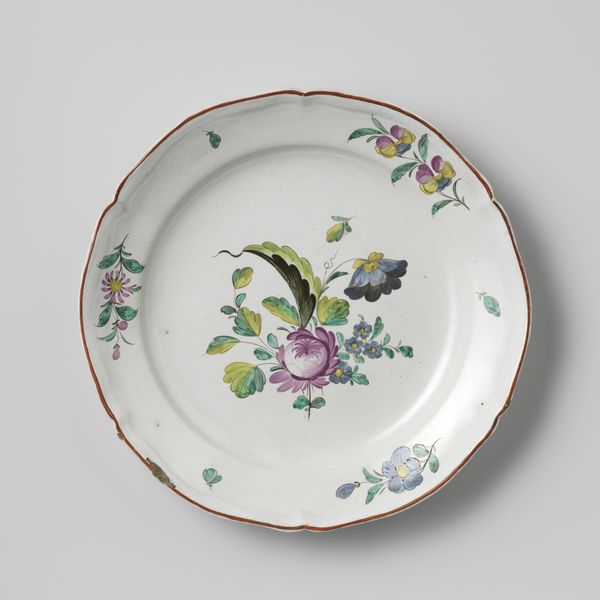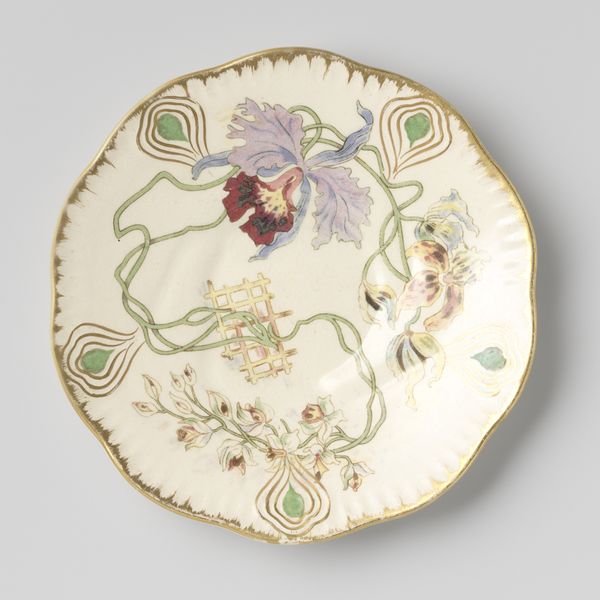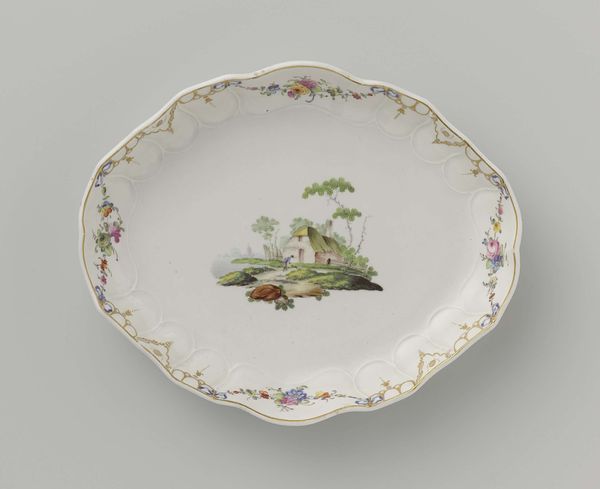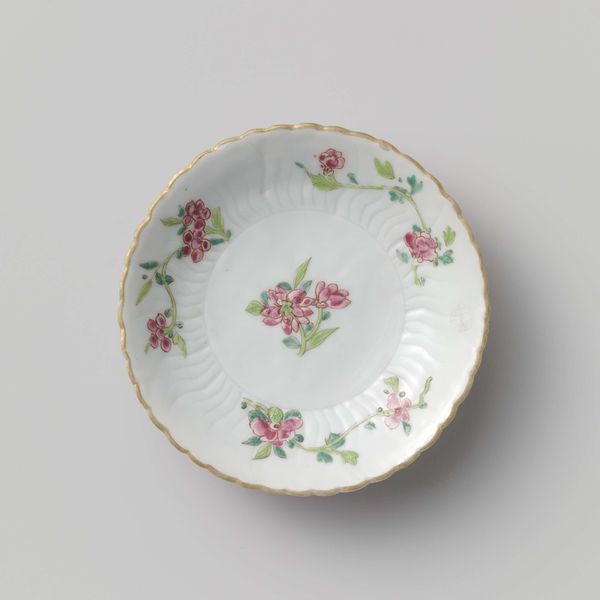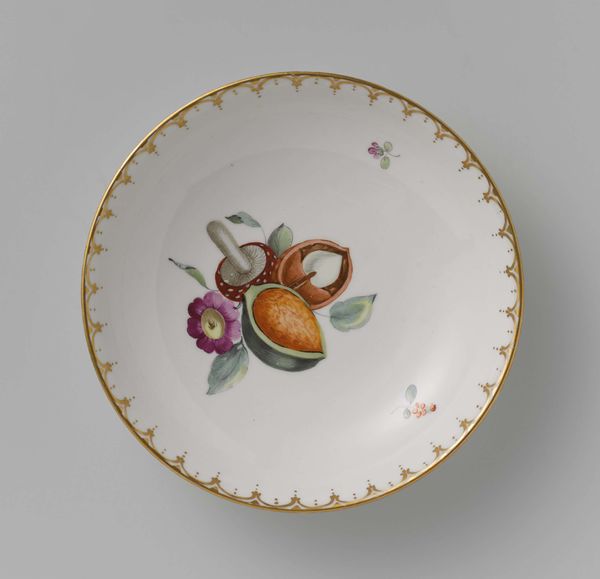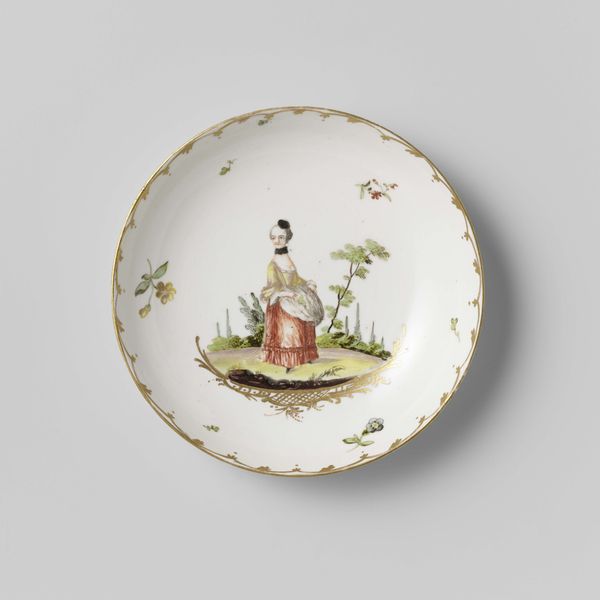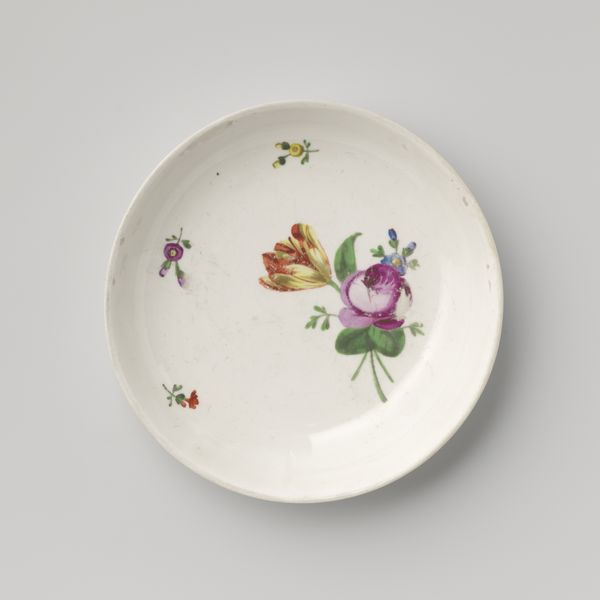
Dimensions: height 3.2 cm, diameter 13.4 cm, diameter 7.8 cm
Copyright: Rijks Museum: Open Domain
Curator: Ah, this delicate piece. It's a porcelain saucer, crafted around 1780 by the Königliche Porzellan Manufaktur. Editor: It’s rather charming. There's a miniature landscape painted within the circle. I get a wistful, pastoral feeling from it. It’s a little jewel, isn't it? Curator: Indeed! The central medallion depicts a rural scene. Observe the intricate rendering of figures on horseback near a sparse tree, set against a faded backdrop suggestive of a distant town. Editor: I'm fascinated by the central landscape. The monochrome contrasts vividly against the otherwise pale, luminous porcelain. What meaning does this stylized approach bring in relation to the art and design movements in 1780s Europe? Curator: Well, the restrained color palette evokes a sense of classical elegance, very much aligned with Neoclassical aesthetics which sought to revive the artistic principles of ancient Greece and Rome. Note the soft floral rim too; it signals the decorative arts flourishing within that period and the broader social desire to refine daily life through beauty. Editor: It’s such a tiny painting though. The entire world seems so fragile on this piece. The image of pastoral aristocracy—people leisurely passing time on horses—does this saucer become a subtle commentary of societal detachment? Curator: That’s an insightful read. Given that porcelain, particularly KPM, was strongly linked to royal power and wealth. Objects such as these reflected elite taste and social order; they could signal power just as much as social complacency, a way of saying all is well. It also echoes the period's obsession with capturing idyllic scenes of rural life as an escape from rapid urbanisation. Editor: So, both an indulgence in beauty, and a reflection, perhaps a slight unease, with societal structures? This object becomes then an example of how art objects served multiple social roles and symbolic communication beyond the purely aesthetic. Curator: Precisely. I think with its miniature format, we have art, ideology, and function intertwining in a captivating way on this porcelain saucer. It is a treasure to behold in person, especially to ponder upon our discussion! Editor: I fully agree. Its impact remains even now, such a small tableau provoking broad discussions, confirming art's ongoing conversation with us, no matter the scale.
Comments
No comments
Be the first to comment and join the conversation on the ultimate creative platform.




